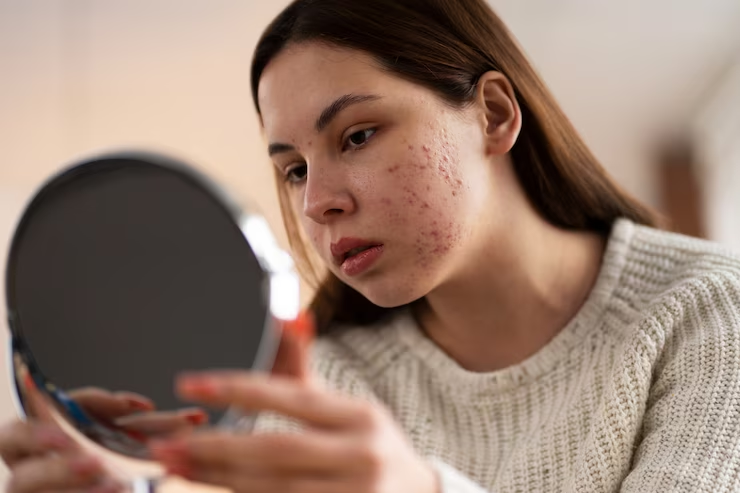Laser Facial Treatments: A Breakthrough Solution for Acne-Prone Skin

Acne, a common skin condition affecting individuals of all ages, has long been a source of frustration and discomfort. Countless products and treatments have been developed to combat this issue, but many fall short of delivering consistent and lasting results.
In recent years, laser facial for acne have emerged as a breakthrough solution for acne-prone skin, offering hope to those seeking a more effective and efficient way to manage their condition. This article delves into the science behind laser facial treatments, their benefits, and their potential as a game-changer in the realm of skincare.
Understanding Acne: Causes and Challenges
Acne is primarily a result of excess sebum production, clogged pores, bacterial growth, and inflammation. These factors contribute to the formation of various types of acne lesions, such as blackheads, whiteheads, pustules, and cysts.
Conventional treatments, like topical creams and oral medications, often target these factors individually and may take weeks to show noticeable results. This has paved the way for exploring alternative treatments like laser therapy.
The Science Behind Laser Facial Treatments
Laser facial treatments, also known as laser skin therapy or laser resurfacing, involve the use of focused light energy to address a wide range of skin concerns, including acne. The underlying principle of laser therapy is to penetrate the skin’s surface with precise wavelengths of light that target specific components within the skin.
For acne-prone skin, lasers are employed to address multiple aspects of the condition, including:
- They target the sebaceous glands responsible for excessive oil production. By heating these glands, lasers can reduce their size and activity, thereby decreasing sebum production.
- Lasers have an anti-inflammatory effect on the skin, which helps to mitigate the redness and swelling associated with acne lesions.
- Last but not least, certain lasers can effectively kill the bacteria responsible for causing acne, such as Propionibacterium acnes.
Benefits of Laser Facial Treatments for Acne
Precise Targeting: One of the key advantages of laser treatments is their precision. The ability to target specific areas of the skin allows for focused treatment, reducing the risk of damage to surrounding healthy tissue.
Versatility: Laser facial treatments come in various types, each with its unique wavelength and depth of penetration. This versatility enables dermatologists to tailor the treatment to an individual’s specific skin type and severity of acne.
Minimal Downtime: While older laser technologies often require extensive downtime due to significant skin peeling and redness, newer advancements have minimized this aspect. Some treatments now offer minimal downtime, making them more accessible to individuals with busy lifestyles.
Long-lasting Results: Unlike some topical treatments that need to be consistently applied, the effects of laser treatments can last for several months. This is especially beneficial for those seeking a more sustainable solution to their acne woes.
Combination Therapy: The laser facial for acne can be combined with other therapies, such as chemical peels or topical treatments, to enhance their effectiveness. This multidimensional approach can yield superior results compared to a single treatment method.
Different Types of Laser Treatments for Acne
- Ablative Lasers: These lasers work by removing the outer layer of the skin, promoting the growth of new, healthier skin cells. Carbon dioxide (CO2) and erbium lasers fall under this category. Ablative lasers are particularly effective for treating severe acne scarring.
- Non-Ablative Lasers: These lasers target the underlying layers of the skin without damaging the surface. They stimulate collagen production, promoting skin rejuvenation. Non-ablative lasers are less invasive and require less downtime compared to ablative lasers.
- Pulsed Dye Lasers: These lasers target blood vessels and are effective in reducing the redness and inflammation associated with acne. They are commonly used to treat vascular acne scars.
- Blue Light Therapy: This targeted light therapy uses blue light to kill the bacteria responsible for causing acne. It is often used in combination with other treatments for enhanced results.
Safety Considerations and Expected Results
While laser facial treatments offer promising results, safety is paramount. It’s essential to undergo these treatments under the supervision of a trained and experienced dermatologist. Skin type, severity of acne, and medical history all play a role in determining the most suitable laser treatment.
In terms of results, patients can expect a gradual improvement in their acne condition over a series of treatment sessions. Redness and mild discomfort immediately after the treatment are common, but these side effects typically subside within a few days. The ultimate outcome varies from person to person, with some individuals experiencing a significant reduction in acne lesions and scarring, while others may require maintenance treatments to sustain their results.
Conclusion
Laser facial treatments have undeniably transformed the landscape of acne treatment. Through their precise targeting of various contributing factors, these treatments offer a comprehensive solution for individuals struggling with acne-prone skin. As technology continues to evolve, we can expect further advancements in laser therapy, making it an even more effective and accessible option for those seeking relief from acne.
However, it’s important to remember that while lasers hold great promise, a holistic approach to skincare, including a balanced diet, proper hygiene, and lifestyle factors, remains crucial in achieving and maintaining healthy, radiant skin. Consulting with a qualified dermatologist is the first step in determining whether laser facial treatments are the right choice for addressing individual acne concerns.


